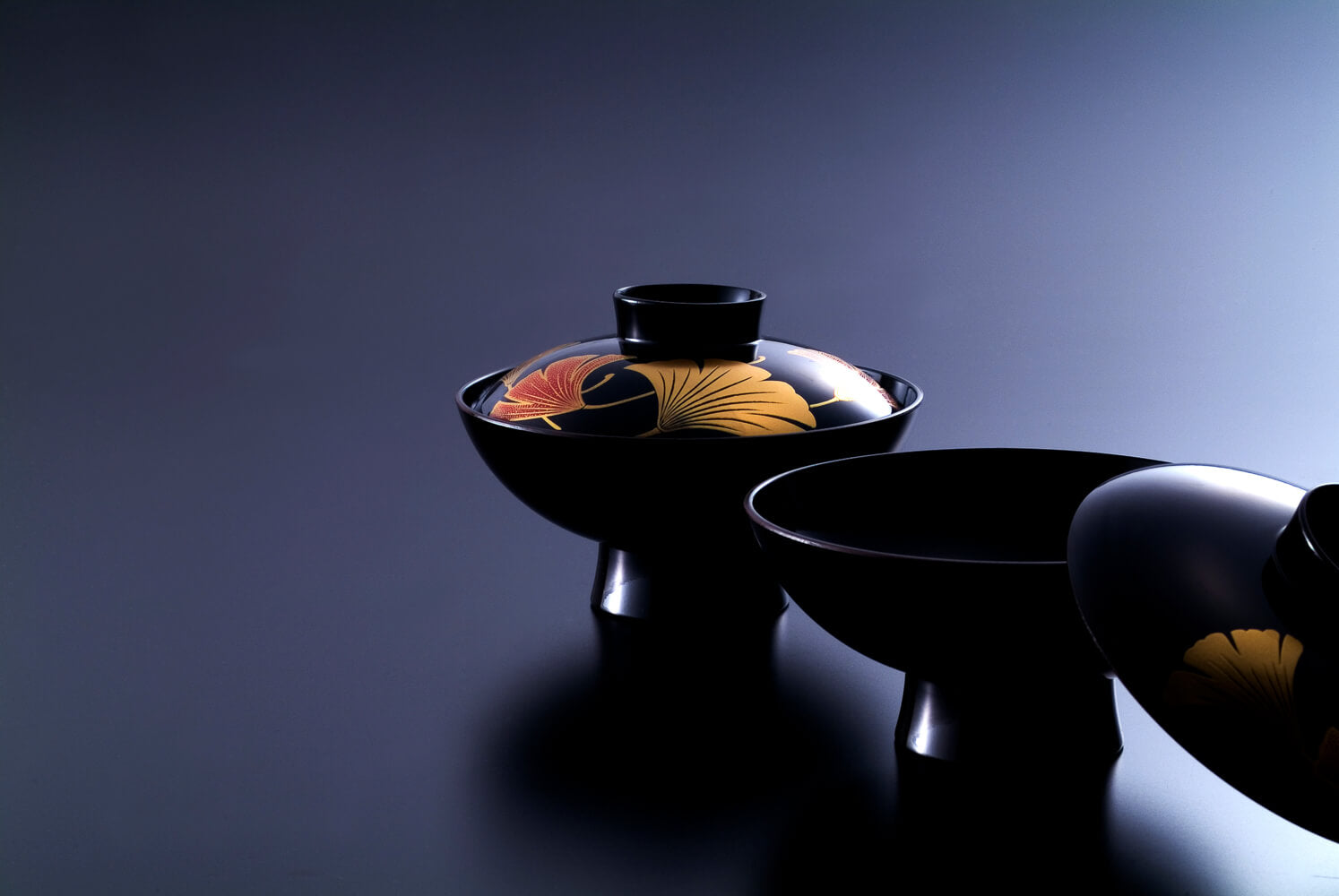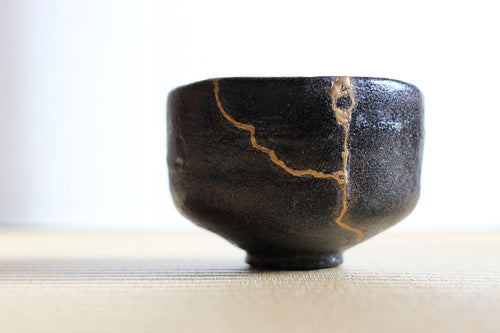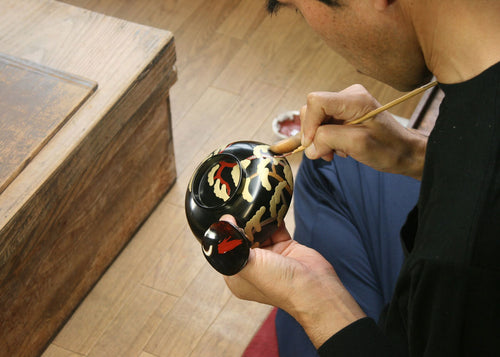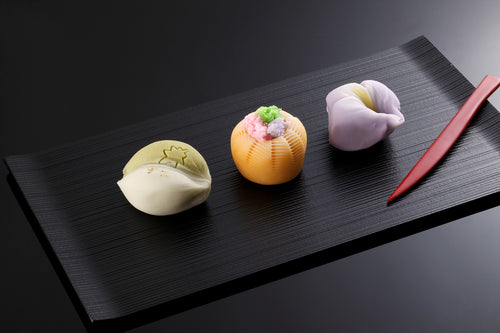How to Care and Maintain Your Japanese Gifts: Preserving the Beauty and Longevity of Your Treasured Items

Introduction
Japanese gifts are not only exquisite works of art but also a reflection of the rich cultural heritage and exceptional craftsmanship that Japan is known for. In order to fully appreciate and enjoy these treasures, it's essential to understand how to properly care for and maintain them. In this article, we will explore the best practices for preserving the beauty and longevity of your Japanese gifts, ensuring that they remain a cherished part of your collection for generations to come.

Caring for Kintsugi Pieces - Embracing Beauty in Resilience
Kintsugi, the art of repairing broken ceramics with gold or silver lacquer, is a testament to the Japanese philosophy of embracing imperfections and celebrating the beauty found in resilience. To ensure that your Kintsugi pieces remain in excellent condition, handling them with care and avoiding exposing them to extreme temperatures or humidity is essential. By taking these precautions, your Kintsugi pieces can last for hundreds of years, preserving their unique aesthetic and the story they tell.
Maintaining Shibori Textiles - Preserving Color and Craftsmanship
Shibori textiles are known for their intricate patterns and vibrant colors, making them a stunning addition to any collection. To maintain their beauty, it's important to handle them gently and store them away from direct sunlight, which can cause fading. When cleaning Shibori textiles, it's recommended to use a gentle, cold-water hand wash, and avoid using bleach or harsh detergents. With proper care, Shibori textiles can maintain their vivid colors and intricate patterns for many years, showcasing the skill and artistry of the artisans who created them.
Preserving Mokuhanga Prints - Safeguarding the Art of Japanese Woodblock Printing
Mokuhanga prints are delicate works of art that require special attention to ensure their longevity. To preserve their vibrant colors and intricate designs, it's essential to keep them away from direct sunlight and fluctuating temperatures. Framing your prints using acid-free materials and UV-protective glass can also help protect them from damage. With proper care, Mokuhanga prints can last for centuries, providing a lasting connection to Japan's rich artistic history.

Protecting Urushi Lacquerware - Ensuring Durability and Luster
Urushi lacquerware is prized for its durability and lustrous finish. To maintain these qualities, it's important to handle your lacquerware with care, avoiding abrasive cleaners or harsh chemicals. Instead, use a soft cloth and mild soap to gently clean the surface. It's also essential to keep lacquerware away from extreme heat or cold, as this can cause the lacquer to crack or warp. With proper care, Urushi lacquerware can retain its beauty and functionality for generations, serving as a testament to the skill and dedication of Japanese artisans.

Storing Wagashi Confections - Enjoying the Sweet Art of Japanese Confectionery
Wagashi confections are delicate and often highly perishable, making proper storage crucial to preserving their quality and flavor. Keep wagashi in a cool, dry place away from direct sunlight, and consume them within the recommended timeframe, usually a few days to a week. By storing wagashi appropriately, you can ensure that you and your guests can fully appreciate the subtle flavors, delicate textures, and artistry of these traditional Japanese sweets.

Looking After Japanese Ceramics - Caring for Timeless Artistry
Japanese ceramics, with their diverse array of styles and techniques, require special attention to ensure their longevity. To care for your ceramics, handle them gently, and avoid exposing them to sudden temperature changes, which can cause cracks or breakage. When cleaning, use a soft cloth and mild soap, and avoid abrasive materials. With proper care and attention, Japanese ceramics can last for centuries, reflecting the enduring spirit of Japan's rich pottery and porcelain traditions.
Going Deeper: Recommended Reading
For those who are captivated by the artistry, history, and cultural significance of Japanese antiquities, arts, and crafts, we have compiled a list of insightful and engaging books that delve deeper into these fascinating subjects. These carefully selected titles provide a wealth of information, covering everything from the philosophy behind traditional crafts to the techniques and care involved in their preservation. Not only do these books serve as an invaluable resource for expanding your knowledge and understanding of Japanese art and culture, but they also make wonderful gifts for anyone who shares a similar passion. Explore the richness and beauty of Japan's artistic heritage through these inspiring and enlightening reads.
Here are some book recommendations that cover the care and appreciation of Japanese antiquities, arts, and crafts:
"Japanese Woodblock Print Workshop: A Modern Guide to the Ancient Art of Mokuhanga" by April Vollmer
"Japanese Woodblock Print Workshop" is a comprehensive guide to the ancient art of Mokuhanga, providing readers with an introduction to the history, techniques, and materials used in Japanese woodblock printing. The book covers every aspect of the craft, from carving the blocks and preparing the pigments to printing and preserving the finished work. Vollmer's approachable writing style and detailed instructions make the art form accessible to beginners and experienced printmakers alike.
April Vollmer's "Japanese Woodblock Print Workshop" is an invaluable resource for anyone interested in the art of Mokuhanga. With its detailed explanations and step-by-step instructions, the book demystifies this traditional art form and encourages readers to explore their own creativity. Beautifully illustrated with examples of contemporary and historic prints, this book serves as both an informative guide and a source of inspiration for artists, collectors, and enthusiasts of Japanese art and culture.
In "The Beauty of Everyday Things," Soetsu Yanagi examines the philosophy behind the Mingei movement and the appreciation of beauty in everyday objects. The book highlights the craftsmanship and artistry found in traditional Japanese crafts, including ceramics, textiles, and woodworking. Yanagi's thoughtful reflections on the aesthetics, spirituality, and cultural significance of these objects invite readers to reconsider their relationship with material possessions and the world around them.
Soetsu Yanagi's "The Beauty of Everyday Things" is a thought-provoking exploration of the philosophy and aesthetics of Japanese crafts. Yanagi's writing is both insightful and poetic, offering a fresh perspective on the value and beauty of everyday objects. The book not only encourages readers to appreciate the artistry and craftsmanship of traditional Japanese arts but also serves as a reminder of the importance of mindfulness and simplicity in modern life. A must-read for anyone interested in the intersection of art, philosophy, and Japanese culture.
In "The Beauty of Everyday Things," Soetsu Yanagi examines the philosophy behind the Mingei movement and the appreciation of beauty in everyday objects. The book highlights the craftsmanship and artistry found in traditional Japanese crafts, including ceramics, textiles, and woodworking. Yanagi's thoughtful reflections on the aesthetics, spirituality, and cultural significance of these objects invite readers to reconsider their relationship with material possessions and the world around them.
Soetsu Yanagi's "The Beauty of Everyday Things" is a thought-provoking exploration of the philosophy and aesthetics of Japanese crafts. Yanagi's writing is both insightful and poetic, offering a fresh perspective on the value and beauty of everyday objects. The book not only encourages readers to appreciate the artistry and craftsmanship of traditional Japanese arts but also serves as a reminder of the importance of mindfulness and simplicity in modern life. A must-read for anyone interested in the intersection of art, philosophy, and Japanese culture.
"The Art of Japanese Ceramics" provides a comprehensive introduction to the rich history and diverse styles of Japanese pottery and porcelain. The book showcases the work of renowned ceramic artists and explores the techniques, aesthetics, and cultural significance of their creations. In addition to the historical context, the book also offers practical advice on the care and maintenance of Japanese ceramics, ensuring their lasting beauty and value.
Tsuneko S. Sadao and Stephanie Wada's "The Art of Japanese Ceramics" is a beautifully illustrated and engaging guide to the world of Japanese pottery and porcelain. The book offers a wealth of information, covering the history, techniques, and aesthetics of this diverse art form. Readers will appreciate the thoughtful discussions of cultural significance and the practical guidance on care and maintenance. Whether you're a collector, a student of Japanese art, or simply an admirer of fine ceramics, "The Art of Japanese Ceramics" is an indispensable resource.
"Shibori: The Inventive Art of Japanese Shaped Resist Dyeing" is a comprehensive guide to the ancient textile art of Shibori, exploring its history, techniques, and care. The book covers a wide range of Shibori methods, from simple tie-dyeing to more complex folding and stitching techniques, and provides step-by-step instructions for creating stunning patterns and colors on fabric. In addition to the practical aspects of the craft, the book also offers insights into the cultural significance and preservation of Shibori textiles.
With its detailed explanations, clear instructions, and beautiful illustrations, "Shibori: The Inventive Art of Japanese Shaped Resist Dyeing" is a must-have resource for anyone interested in the art of Shibori. The authors expertly guide readers through the various techniques, encouraging experimentation and creativity while providing practical advice on maintaining the vibrant colors and intricate patterns of Shibori textiles. This book is not only informative but also inspiring, making it an excellent choice for artists, collectors, and enthusiasts of Japanese textile art.
In "Kintsugi: The Japanese Art of Embracing the Imperfect and Loving Your Flaws," Tomás Navarro explores the history and philosophy behind Kintsugi, the ancient Japanese practice of repairing broken ceramics with gold. While the book primarily focuses on the life lessons that can be learned from this art form, it also offers an introduction to the techniques involved in the repair and care of Kintsugi ceramics. Navarro's thoughtful reflections on imperfection, resilience, and beauty provide readers with a fresh perspective on embracing flaws and finding value in the broken.
Tomás Navarro's "Kintsugi" is a beautifully written and thought-provoking exploration of the Japanese art of embracing imperfection. The book skillfully weaves together history, philosophy, and practical advice, offering readers a deeper understanding of the cultural significance and techniques of Kintsugi. Navarro's insights on resilience, self-acceptance, and the beauty of imperfection make this book a valuable read for anyone seeking inspiration and personal growth.
By exploring these books, you will gain a deeper understanding and appreciation for Japanese antiquities, arts, and crafts, while learning how to care for and preserve your treasured items.
Conclusion:
By understanding the unique care and maintenance requirements of each Japanese art form, you can ensure the beauty and longevity of your treasured gifts. Through proper care and appreciation, these exquisite works of art will continue to captivate and inspire for generations to come, serving as a testament to the rich cultural heritage and exceptional craftsmanship of Japan. As you explore the captivating world of Japanese art and craft, may you develop a deeper understanding and appreciation for the enduring spirit of Japanese craftsmanship. By nurturing and preserving these treasures, you are not only safeguarding their beauty and value but also fostering a lasting connection to the rich artistic traditions of Japan. Let your Japanese gifts serve as a reminder of the remarkable skill, dedication, and passion that lies at the heart of this ancient and vibrant culture.
Ready to explore our wide range of products? Visit our catalog page now and discover the perfect items for your needs!
